Native Plants
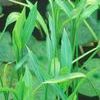
|
Common Name: Arrowhead
This native, emergent or submersed aquatic plant grows best in shallow water up to five feet deep in static or slow moving freshwater such as lakes, streams, and pond margins. Sagittaria graminea has both emergent and underwater leaves. The small, wh...
[ More Info ] [ Add to Shopping List ]
|
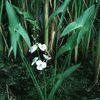
|
Common Name: Broadleaf Arrowhead
One of our most common native aquatic plants, Broadleaf Arrowhead, occurs in a wide variety of wetland habitats including rivers, streams, lakes, and ponds. This particular species is the most widespread arrowhead. It is often referred to as "Duck Po...
[ More Info ] [ Add to Shopping List ]
|
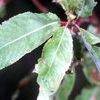
|
Common Name: Peachleaf Willow
Small to medium-sized tree, often with several trunks. Twigs thin, flexible, shiny, gray or yellowish. Branches spreading to drooping, glabrous, yellowish becoming dark brown with age. Leaves yellowish-green....
[ More Info ] [ Add to Shopping List ]
|
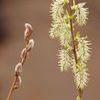
|
Common Name: Prairie Willow
Fuzzy flowers open in early spring before the small gray-green leaves appear on 4" long branches. This willow prefers drier sites, unlike others of its species. It provides dense thickets for wildlife. Rabbits and deer eat twigs, leaves and shoots...
[ More Info ] [ Add to Shopping List ]
|
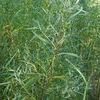
|
Common Name: Sandbar Willow
Sandbar Willow is found on sand bars and on moist alluvial soil. The vigorous spreading is useful for soil stabilization near streambanks. Also, the glossy branches with 8-15 cm long leaves add colour and interest to the landscape especially when mas...
[ More Info ] [ Add to Shopping List ]
|

|
Common Name: Black Willow
Common native tree of river banks and other wet habitats. The leaves are long and thin The tiny flowers are borne in catkins in early May. Black Willow is dioecious, so male (left) and female flowers are borne on different plants....
[ More Info ] [ Add to Shopping List ]
|

|
Common Name: Meadow Willow
Clumped or few-stemmed shrub with reddish-brown to dark brown or almost black limbs. Branches are spreading to erect, yellowish-green to dark brown. Leaves are dark green above, white-glaucous beneath, hairy when young, becoming smooth with age. The ...
[ More Info ] [ Add to Shopping List ]
|
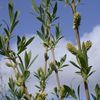
|
Common Name: Purple Willow
A stunning shrub for the border. The slender grey-green leaves contrast well with perennials. In winter, young purple stems are outstanding. Cut back to the ground in early spring to retain willowy effect and purple color. Older stems are grey-brown ...
[ More Info ] [ Add to Shopping List ]
|
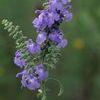
|
Common Name: Blue Sage
In late summer, hummingbirds are drawn to these tall plants that bloom with nectar-rich azure-blue flowers on slender spikes. The densely-packed flowers form whirled blooms. The foliage is narrow, gray-green and lance shaped....
[ More Info ] [ Add to Shopping List ]
|
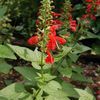
|
Common Name: Scarlet Sage
Like most salvias, this one is a heat-lover. This species will do well from spring through the hottest weather, with or without water. Prefers well-drained sites. This wildflower is a close relative of the red salvia we all know as a common bedding p...
[ More Info ] [ Add to Shopping List ]
|
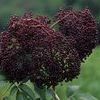
|
Common Name: Elderberry
In spring, this dramatic, thicket-forming shrub with bright green leaves is covered with large showy clusters of white fragrant flowers. Come fall, the flowers are followed by clusters of dark purple berrylike fruits that attract mammals and birds a...
[ More Info ] [ Add to Shopping List ]
|
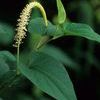
|
Common Name: Lizard's Tail
Long, creamy-white flowers rest over heat-shaped leaves above six to eight inch long spikes. Grayish nutlets, similar to a lizard's tail, cover the spike when the flowers go to seed. All parts of the plant smell like citrus. A fabulous addition to ...
[ More Info ] [ Add to Shopping List ]
|
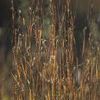
|
Common Name: Little Bluestem
Through the winter, the fluffy silver seed heads are ornamental on this small non-spreading, clump-forming grass. The summer foliage is blue-green and turns tawny to reddish-orange in fall....
[ More Info ] [ Add to Shopping List ]
|
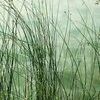
|
Common Name: Hardstem Bulrush
Hardstem and Softstem Bulrushes are tall, stout, perennial plants with round, olive green stems, drooping brown flower clusters near the stem tips, and a few inconspicuous leaves at the stem bases. Both species are commonly seen in marshes and along ...
[ More Info ] [ Add to Shopping List ]
|
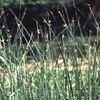
|
Common Name: Olney's Bulrush
A robust sedge with triangular pale green stems to about three feet. Blooms from May through September. The achenes are food for ducks and small mammals. It is common in damp and swampy places....
[ More Info ] [ Add to Shopping List ]
|
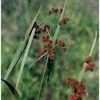
|
Common Name: Green Bulrush
This native bulrush blooms from August through September along pond and stream margins, in ditches and in wet depressions along roads. Many of the plants of this genus can be difficult to distinguish but all are valuable for wetland restorations and ...
[ More Info ] [ Add to Shopping List ]
|
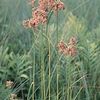
|
Common Name: Marsh Bulrush
Marsh Bulrush, sometimes called "Woolgrass," is not really a grass, even though it looks like one.
Marsh Bulrush is closely related to sedges, plants known for growing in wet areas such as marshes, lake shores, ponds, wet woods and ditches.
Mar...
[ More Info ] [ Add to Shopping List ]
|
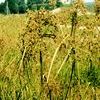
|
Common Name: River Bulrush
This native bulrush blooms from August through September along pond and stream margins, in ditches and in wet depressions along roads. Many of the plants of this genus can be difficult to distinguish but all are valuable for wetland restorations and ...
[ More Info ] [ Add to Shopping List ]
|
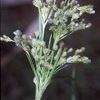
|
Common Name: Drooping Bulrush
This native perennial plant is 2-4' tall and unbranched. The culms are green or dark green, glabrous, and terete; each culm has 5-10 alternate leaves along its length. The leaf blades are up to 10 inches long and 1/3 inch across; they are green, dark...
[ More Info ] [ Add to Shopping List ]
|
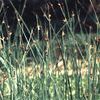
|
Common Name: Three-square Rush
Three-square Rush is a bulrush sedge. Stems are sharply triangular and grow up to three feet tall. There are few leaf blades along the stems. The leaves can grow up to eight inches long and are strongly folded....
[ More Info ] [ Add to Shopping List ]
|
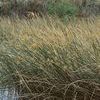
|
Common Name: Soft-stem Bulrush
Soft-stem Bulrush might first be noticed as a large colony of stems growing in water, the stems topped by a hanging inflorescence.
Soft-stem Bulrush is a bulrush sedge with stems to eight feet tall. The stems are very rounded, triangular-shaped ...
[ More Info ] [ Add to Shopping List ]
|
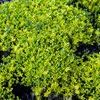
|
Common Name: Golden Moss Sedum
Goldmoss is a perennial plant native to Europe, but also naturalized in North America. This plant grows as a creeping ground cover, often in dry sandy soil, but also in the cracks of masonry. It grows well in poor soils, sand, rock gardens,and rich d...
[ More Info ] [ Add to Shopping List ]
|
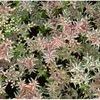
|
Common Name: Widowscross Sedum
This species is found in dry, thin soil rather than limestone and mossy banks. It also bears flowers on a raised stalk rather than short stems among fleshy, succulent leaves....
[ More Info ] [ Add to Shopping List ]
|
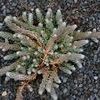
|
Common Name: Reflex Stonecrop Sedum
Low-growing succulent plant great for rock gardens, plantable walls and containers....
[ More Info ] [ Add to Shopping List ]
|
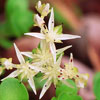
|
Common Name: Sedum
In spring, white star-like flowers cover this small sedum. Foliage is arranged in whorls of three, small, green, fleshy leaves on the stems. The plant is often evergreen. Great groundcover for dry sites and interesting in containers....
[ More Info ] [ Add to Shopping List ]
|
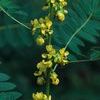
|
Common Name: Wild Senna
In the summer, clusters of brownish yellow pea-like flowers top unbranched stems on this perennial. In fall, to pea-like pods up to four inches long turn black and remains ornamental through the winter. A shrubby herbaceous perennial with feathery,...
[ More Info ] [ Add to Shopping List ]
|
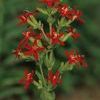
|
Common Name: Royal Catchfly
Royal Catchfly is similar to Fire Pink (Silene virginica), but is taller and blooms later in the season (June-August) with brilliant two-inch wide red flowers that provide nectar for butterflies and hummingbirds. The flower, which is sticky, gives t...
[ More Info ] [ Add to Shopping List ]
|
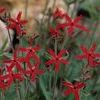
|
Common Name: Fire Pink
Fire Pink is native to mossy rock outcrops in woodlands and does not do well with competition. It looks similar to Royal Catchfly (Silene regia) but blooms earlier in the season. In April and May, its deep red flowers attract hummingbirds. A mass ...
[ More Info ] [ Add to Shopping List ]
|
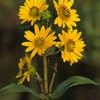
|
Common Name: Rosinweed
The shortest of all Silphiums, Rosinweed has textured leaves that have the feel of sandpaper. In July to August, clusters of yellow flowers bloom atop stems. The seed is enjoyed by birds....
[ More Info ] [ Add to Shopping List ]
|
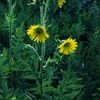
|
Common Name: Compass Plant
A Plants of Merit winner, this tall sturdy plant with deeply cut basal leaves adds form and texture to the landscape. The leaves resemble pinoak. In summer, large yellow sunflower-like flowers bloom on stiff spikes nine feet tall. The common name c...
[ More Info ] [ Add to Shopping List ]
|
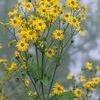
|
Common Name: Cup Plant
Unlike other silphiums, this plant is distinguished by its pairs of cup-forming leaves which clasp the square, central stem and hold water after a rain or heavy dew. Birds and insects are often seen sipping from the "cups." In summer, the plant bloom...
[ More Info ] [ Add to Shopping List ]
|
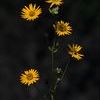
|
Common Name: Prairie Dock
In late summer, this robust perennial blooms with sunflower-like yellow flowers on eigh foot tall stalks. The big, bold, basal leaves grow 24-36 inches tall and make this a worthy addition to the landscape even without the summer blooms. The foliag...
[ More Info ] [ Add to Shopping List ]
|
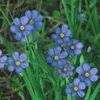
|
Common Name: Blue-Eyed Grass
Blue-Eyed Grass is a primitive iris that can easily be mistaken for a clump of grass if not for the yellow-centered, bright blue, almost daisy-like flowers that are present May through July.
It is native to midwestern & eastern North America. The ...
[ More Info ] [ Add to Shopping List ]
|
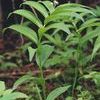
|
Common Name: False Solomon's Seal
Slender, gracefully arching plant that commonly grows in shady places, particularly under oaks. Flowers are in a raceme followed by white berries. A spring ephemeral, the plants become dormant in the summer when no rain fall occurs and dies to base t...
[ More Info ] [ Add to Shopping List ]
|
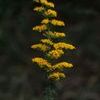
|
Common Name: Gray Goldenrod
In late summer, small yellow flowers are clustered and densely packed at the ends of stiff stems. Grayish hairs on stems and leaves gives the plant its common name....
[ More Info ] [ Add to Shopping List ]
|
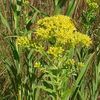
|
Common Name: Riddell's Goldenrod
This goldenrod species is a somewhat rare native perennial which occurs only in wet meadows. Tiny, bright yellow flowers are held in dense, flat-topped clusters atop stiff stems typically growing three to four feet tall. Flowers bloom late summer to ...
[ More Info ] [ Add to Shopping List ]
|
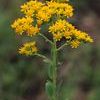
|
Common Name: Stiff Goldenrod
A clump-forming goldenrod that blooms in late summer and early fall. Its true yellow, flat-topped flowers provide nectar for butterflies. Birds love the seed of this goldenrod....
[ More Info ] [ Add to Shopping List ]
|
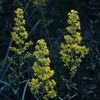
|
Common Name: Showy Goldenrod
These clump forming plants bloom in late summer and fall with showy clusters of bright yellow flowers on stiff reddish stems with narrow leaves. A good cut flower for bouquets....
[ More Info ] [ Add to Shopping List ]
|
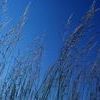
|
Common Name: Indian Grass
Upright clumps of slender, blue-green leaves 24-36 inches tall turn golden yellow in the fall. In late summer, vertical flowering stems are topped with 12 inch long light brown flower panicles that have yellow stamens. Excellent grass for mid-height...
[ More Info ] [ Add to Shopping List ]
|
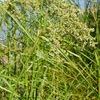
|
Common Name: American Bur Reed
When not in flower, this aquatic sedge is commonly seen with its leaves submerged and lying horizontal in the water's current. Fertile plants have long erect leaves and resemble a cross between a sedge and a Cattail until flowering. American Bur Reed...
[ More Info ] [ Add to Shopping List ]
|
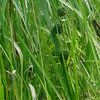
|
Common Name: Giant Bur Reed
Round bur-like flower heads and strap-like leaves distinguish bur-reeds. Spiny flower heads grow on the sides of flowering stems, that bend at each point of attachment giving them a zigzag appearance. Waterfowl eat the achenes....
[ More Info ] [ Add to Shopping List ]
|
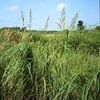
|
Common Name: Prairie Cord Grass
Long, graceful blades are sharply serrated and can easily cut skin, giving the plant its common name, Rip Gut. Inconspicuous flowers bloom in late summer. Prairie Cord Grass forms a sod with its heavy, multi-branched root system that can reach a dept...
[ More Info ] [ Add to Shopping List ]
|
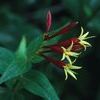
|
Common Name: Indian Pink
Rated as a "Top 10 Hummingbird Plant," Indian Pink is spectacular. It is an easy-to-grow perennial that naturally occurs beside streams and open wood edges. The flowers, which look like stars, emerge in late spring and are bright crimson and tubula...
[ More Info ] [ Add to Shopping List ]
|
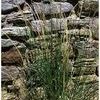
|
Common Name: Sand Dropseed
As the name implies, this grass most commonly occurs on sandy sites, but is also found on our prairies and meadows. Its inflorescence is wide at the base and narrows to a point. It also has an obvious ring of hairs at the base of the leaf blade. The ...
[ More Info ] [ Add to Shopping List ]
|
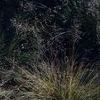
|
Common Name: Prairie Dropseed
This 2005 Missouri Botanical Garden Plants of Merit winner forms a dense, graceful clump with thin, emerald green leaves that turn yellow or deep orange in fall. In August, seed heads form which give off a distinct aroma reminiscent of popped corn. ...
[ More Info ] [ Add to Shopping List ]
|
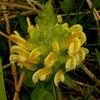
|
Common Name: Wood Betony
An interesting wildflower found in woods and forest clearings, in mesic to dry black soil prairies, savannas, and borders of lakes. Small flowers, about 3/4" long, bloom in yellow, rusty-red, or both between April and June. The flowers are replaced b...
[ More Info ] [ Add to Shopping List ]
|
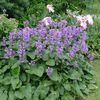
|
Common Name: Big Betony
Large green leaves with scalloped edges and bright violet flowers in tiered whorls. Effective in masses and when combined with plants with chartreuse foliage....
[ More Info ] [ Add to Shopping List ]
|
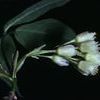
|
Common Name: Bladdernut
A small tree for partially shaded areas. In spring, young leaves emerge with three bright green leaflets that turn dark green in the summer and pale yellow in fall. In the spring, the small tree produces many greenish-white, bell-shaped flowers on l...
[ More Info ] [ Add to Shopping List ]
|
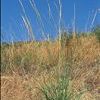
|
Common Name: Green Needlegrass
Green Needlegrass is a cool-season, perennial bunchgrass. Panicles are somewhat compact. Awns are usually twice bent, somewhat curly when mature, and roughly one inch long. Florets turn dark brown and shiny when ripe. Leaves are often rolled, thr...
[ More Info ] [ Add to Shopping List ]
|
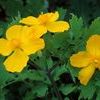
|
Common Name: Celandine Poppy
An early spring bloomer perfect for the shade garden with showy, yellow flowers above lobed green leaves....
[ More Info ] [ Add to Shopping List ]
|
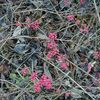
|
Common Name: Coralberry
Coralberry is a dense, suckering, deciduous shrub which naturally occurs in open woods, old fields and thickets. Spreads by runners to form impenetrable thickets in the wild. Typically grows 2-5' tall with arching stems. Bell-shaped, white flowers wi...
[ More Info ] [ Add to Shopping List ]
|
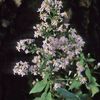
|
Common Name: Blue Wood Aster
This light blue Aster prefers average, dry to medium - well drained soil in full sun to part shade. Clusters of yellow-centered daisy-like flowers bloom in late summer to early fall....
[ More Info ] [ Add to Shopping List ]
|
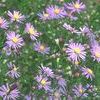
|
Common Name: Smooth Aster
This fall beauty has an erect, slender habit. Leaves are variable in size and shape, but are generally narrow and up to four inches in length. The flowers are borne on open panicles of numerous heads. Smooth Aster occurs on dry, open sites and does w...
[ More Info ] [ Add to Shopping List ]
|
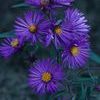
|
Common Name: New England Aster
This handsome aster grows up to six feet tall and produces hundreds of large, bright purple flowers with yellow centers in September and October. The flowers are a favorite nectar source for migrating monarch butterflies. Like other asters, it can be...
[ More Info ] [ Add to Shopping List ]
|
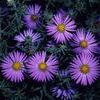
|
Common Name: Aromatic Aster
One of the last wildflowers to bloom, this aster is loaded with purple flowers with yellow ceners that persist into late fall. This aster grows into a tidy, compact, self-supporting mound and is a real treasure in the fall garden. Like other asters, ...
[ More Info ] [ Add to Shopping List ]
|
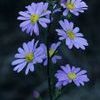
|
Common Name: Sky Blue Aster
This shorter aster is usually less than three feet tall and is an excellent late bloomer for the mixed border. Loads of blue flowers with yellow centers bloom in fall. The foliage is blue-green and stems are dark. Butterflies love the nectar....
[ More Info ] [ Add to Shopping List ]
|
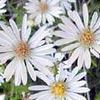
|
Common Name: Silky Aster
This highly variable species is common and found throughout Missouri. It is one of the most common Asters in the eastern U.S. This attractive plant is found in open, sandy or rocky sites that are somewhat dry as well as roadsides, meadows, waste area...
[ More Info ] [ Add to Shopping List ]
|
